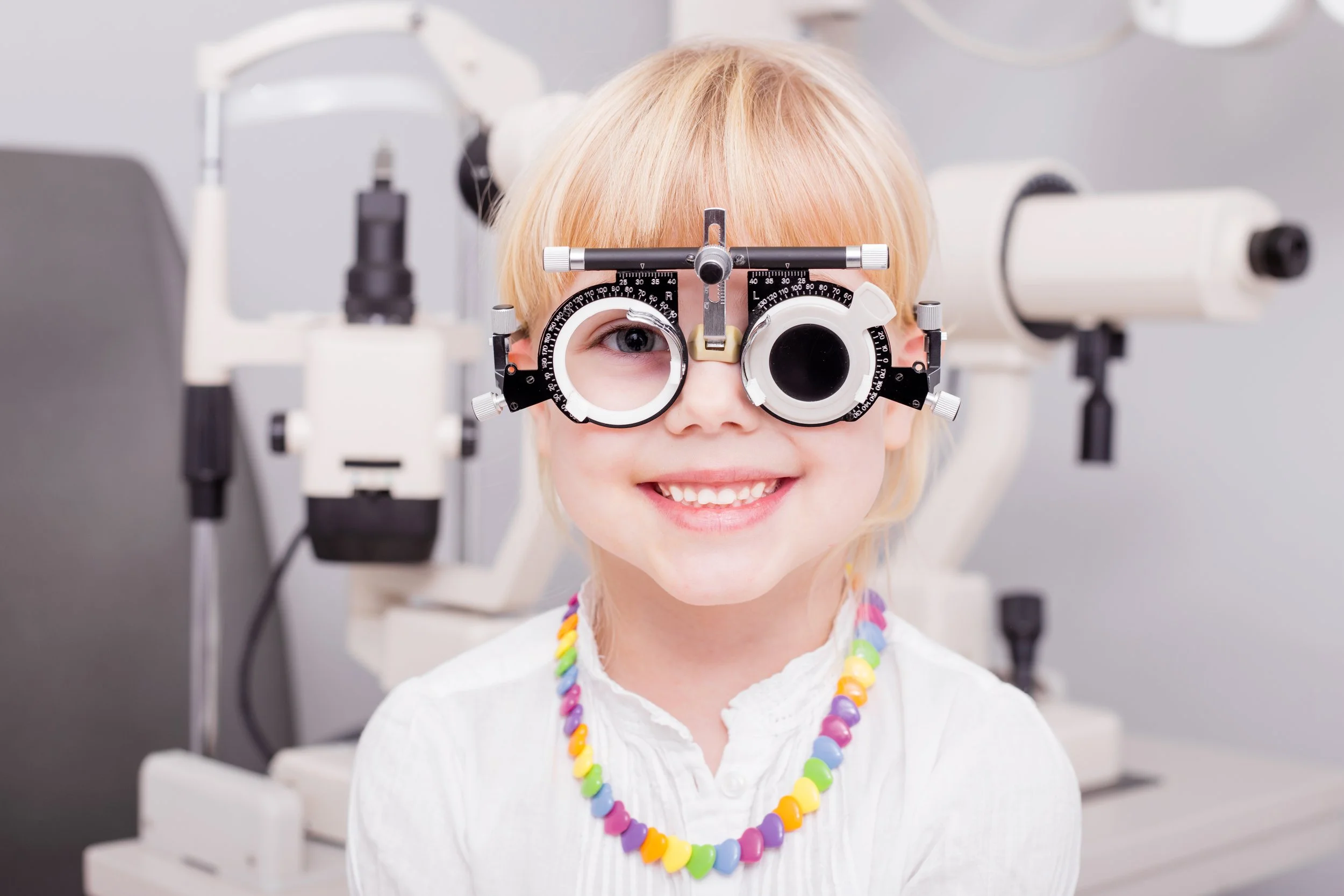Myopia Control
What is Myopia?
Myopia, or short-sightedness, is a common vision condition where distant objects appear blurry, while close-up objects may be clear. It typically begins in childhood and can worsen as the eye continues to grow.
Children with myopia often need glasses or contact lenses to see clearly at a distance. In some cases, they may also need vision correction for close work, depending on the severity of their myopia.
What Causes Myopia?
Myopia occurs when the eye grows too long from front to back. This causes light to focus in front of the retina rather than directly on it, leading to blurry distance vision.
Risk Factors for Myopia:
Genetics: One myopic parent triples your child’s risk. If both parents are myopic, the risk increases even further.
Environment:
Less than 13 hours of outdoor time per week
More than 2 hours a day of near work (outside of school)
Other Factors: Ethnicity, age, and binocular vision problems
Why is Myopia Control Important?
Myopia doesn’t just affect vision - it can increase the risk of serious eye diseases later in life, including:
Retinal detachment
Glaucoma
Cataracts
Myopic maculopathy
The higher the myopia, the greater the long-term risk. The goal of myopia control is to slow down the progression and reduce these risks in the future.
The Role of Axial Length Measurement
In addition to monitoring prescription changes, your optometrist may measure your child’s axial length—the physical length of the eye. This provides a more accurate indicator of myopia progression, especially in children.
Why is this important?
Even small increases in axial length can mean a significant increase in eye disease risk.
Myopia control treatments aim not only to limit changes in prescription, but also to slow eye growth.
Regular axial length measurements help us tailor and assess the effectiveness of your child’s treatment plan.
Myopia Control Options
We provide a range of clinically proven treatments designed to slow the progression of myopia. Each treatment plan is customised to the individual, as not all therapies are appropriate for every child, and responses to treatment may vary.
1. MiYOSMART Spectacle Lenses
Worn as fulltime glasses, MiYOSMART spectacle lenses are easy to adapt to, can be fitted to most frames, and look just like regular single vision lenses. They are based on revolutionary Defocus Incorporated Multiple Segments (D.I.M.S) Technology and have been shown to reduce myopia progression by 60% on average compared to regular single vision lenses.
2. MiSight® Contact Lenses
MiSight® are specially designed soft, daily disposable contact lenses. The lens centre focuses on vision correction while alternating rings surrounding the centre provide myopia control and vision correction. They have been shown to slow myopia progression by 58% on average compared to single vision lenses.
3. Orthokeratology (Ortho-K)
Ortho-K are individually designed hard contact lenses that are worn at night during sleep to re-shape the cornea and give clear vision throughout the day. They have been shown in several studies to reduce myopia progression by 50% on average.
4. Atropine Eye Drops
These are prescription eye drops of varying low dose concentrations that usually need to be compounded by a special pharmacy. Initial research suggested a concentration of 0.01% was effective, however more recent research has shown that higher concentrations have a better myopia control effect, with 0.05% slowing myopia progression by an average of around 50%. Side effects in children using these drops are rare but they can be associated with an increase in light sensitivity and a decrease in near focus.
What Can Parents Do?
Encourage at least 2 hours of outdoor time daily
Monitor and limit screen time and close-up activities
Schedule regular eye exams to monitor prescription and axial length
Discuss personalised treatment options with your optometrist
Book a Consultation
Early intervention is key to protecting your child’s long-term eye health. Contact us to schedule a Myopia Control Assessment and take the first step toward healthy vision for life.

